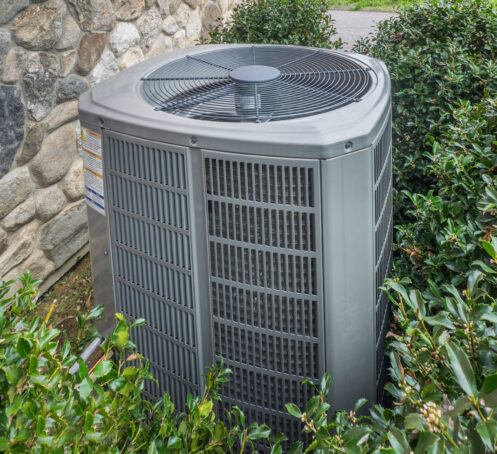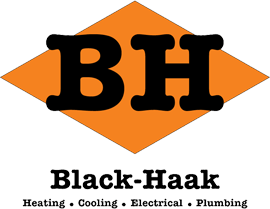
According to the United States Department of Energy (DOE), zoning the HVAC system in your Fox Valley, WI home could cut your heating and cooling costs by as much as 30%. With HVAC zoning, you can divide your house into separate service areas and distribute heated and cooled air only as needed. HVAC zoning offers customized comfort and a chance to greatly reduce your carbon footprint.
What HVAC Zoning Control Systems Are and How They Work
Standard, central HVAC systems heat and cool building interiors uniformly. These systems have a single, centrally located thermostat that governs temperatures in all areas. Using them often means heating and cooling empty spaces.
Zoning creates two to four separate service areas. For instance, you can create an upstairs and downstairs zone for your Fox Valley home or you can separate communal, sleeping, and work areas. When creating zones, we consider factors like building layouts, household sizes, and residents’ indoor habits and schedules.
Each zone has its own thermostat and each thermostat only controls the temperature in the related area. If someone in your household wants heat but your room is already warm enough, a zoned HVAC system is enough to meet both needs at once.
The thermostats in zoned HVAC systems communicate with zone control systems. Zone control systems receive “calling” and “hold” signals for each zone and coordinate the movements of ducting to accommodate them. Much like smart thermostats, many zone control systems are learning devices that allow for remote monitoring and seamless integration with other smart home features.
The Basic Anatomy of a Zoned HVAC System
In addition to smart thermostats and zone control systems, zoned HVACs also have bypass ducts and duct dampers. Duct dampers open and close to coordinate and streamline the delivery of conditioned air. Bypass ducts open as needed to let excess air flow through. This prevents zoned ducting from developing air pressure issues and supports efficient heater and AC operation.
Alternative Pressure-Mitigation Strategies
Bypass ducts are one of multiple ways in which HVAC companies can mitigate pressure in zoned ducting. Whenever airflow is directed away from the air vents in any room or zone, it must have a place to go. While bypass ducts are effective, some companies achieve the same results by installing oversize ducting in select areas. Larger air ducts can accommodate more air without developing pressure problems or negatively impacting the heater or AC performance.
Zoning Adds Value to Homes and Saves Homeowners Money
Heating and cooling empty rooms cause a tremendous amount of energy waste. Unfortunately, this is a common issue in households throughout the nation. In many large, multi-level homes, all bedrooms are located upstairs. When people go to sleep at night, having heaters and air conditioners regulate temperatures in unoccupied, downstairs areas is unnecessarily costly. With a two-zone HVAC system, residents can regulate temperatures right where they are to save both energy and money.
Smart and efficient home upgrades like HVAC zoning increase the marketability of residential properties. Savvy real estate shoppers are increasingly looking for listings with cutting-edge HVAC and smart home technologies. Zoning your home is a great way to keep your investment on par with current market standards. Whether selling soon or simply looking to limit your carbon footprint and energy costs right now, zoning can help.
Zoning Might Extend the Lifespan of Your HVAC Equipment
Heating and cooling individual zones or rooms is a lot less taxing and labor-intensive than heating entire buildings. As a result, zoned HVAC systems tend to sustain less wear over time. With less work to do, heaters, air conditioners, and heat pumps are also less likely to experience stress-related, mid-season breakdowns or need major components replaced.
You Can Cut Your Carbon Footprint Without Sacrificing Comfort
Having your HVAC system zoned will allow you to cut your carbon footprint and your energy bill without experiencing any significant decrease in your indoor comfort. Zoning provides heated and cooled air right where people are without negatively impacting HVAC humidity control, heating and cooling performance, or overall indoor air quality (IAQ).
Zoning Prevents Arguments at the Thermostat
The customized comfort that zoning provides also prevents heated arguments about thermostat settings. Best of all, with Wi-Fi-enabled, smart thermostats, homeowners can monitor and adjust individual thermostat settings from any location.
Keep Your Plumbing Protected
The thermostats installed in individual service areas throughout zoned HVAC systems offer far better than “ON” and “OFF” functionality. For instance, if you have a two-zone HVAC system and direct conditioned air upstairs at night to service your sleeping areas, you can still maintain sufficient heat flow to downstairs areas to keep your pipes from freezing. With a two-zone system, you can set your downstairs thermostat to just 60 degrees Fahrenheit or less while maintaining a much more comfortable temperature setting for your upstairs zone.
Eliminate the Need for Inefficient, Secondary Heating and Cooling Equipment
Arguments over thermostat settings aren’t the only problem that uniform heating and cooling distribution causes. Many people use inefficient, secondary heating and cooling sources when central thermostat settings don’t match their comfort needs. These include:
- Wood-burning fireplaces and stoves
- Heating blankets
- Space heaters
- Portable fans
Not only do many of these secondary heating and cooling sources use considerable amounts of energy, but some are also unsafe for regular use. With the ability to control temperatures in your immediate area, you can rely solely on your home’s HVAC system for comfort.
Avoid Potentially Harmful Vent Closures
For many years, people simply closed HVAC air vents when they no longer wanted conditioned air. Unfortunately, vent closures cause instant changes in static pressure within HVAC air ducts and place tremendous strain on heating and cooling equipment. Moreover, unlike zoned HVAC systems, central HVACs with closed ducts don’t have bypass ducts or larger duct sizes to mitigate air pressure problems. With zoning, no one in your home will be tempted to seal air vents shut again.
Level up to Smart HVAC Technologies
Zoned HVAC systems offer a level of convenience that standard, central systems can’t match. This is due in large part to the smart thermostats that drive them. If you haven’t upgraded to a smart thermostat already, zoning will give you the chance to experience some of the truly impressive benefits that these devices provide:
- Energy consumption tracking
- Detailed energy reports
- HVAC performance alerts
- Reminders for HVAC maintenance and filter replacements
Many smart thermostats and zone control systems additionally offer geofencing. With geofencing, your HVAC system will adjust zone performance as you move from room to room. As learning devices, smart thermostats become increasingly adept at maintaining residents’ preferred temperatures wherever they are. Geofencing eliminates the need to make manual temperature adjustments, such as when leaving downstairs areas to retire to upstairs bedrooms.
We help homeowners in Fox Valley, WI find and leverage the latest and most cutting-edge HVAC technologies. We offer expert heating, plumbing, cooling, and electrical services. To find out more about HVAC zoning or schedule an appointment, contact Black-Haak today!

